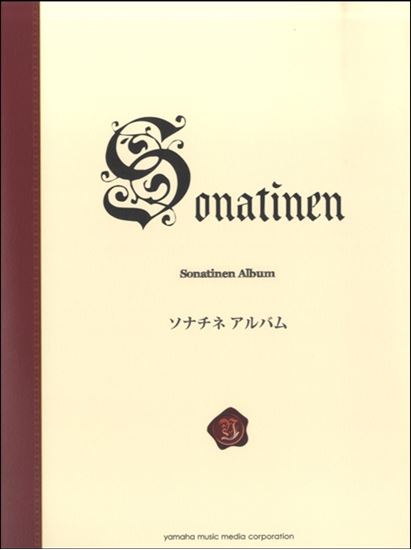Home > omnibus > Sonatine Album 1 > No. 1 C-Dur > Mov.1 I. Allegro C-Dur
Clementi, Muzio : No. 1 Mov.1 I. Allegro C-Dur
Work Overview
Genre:sonatina
Total Playing Time:1 min 30 sec
Copyright:Public Domain
Commentary (1)
Author : Ooi, Kazurou
Last Updated: November 21, 2018
[Open]
Author : Ooi, Kazurou
This piece is an introductory sonatina, often given to students as their first sonatina because it is one of the easiest pieces in sonatina albums. Most students do not ask, but be prepared to answer if they inquire, "What does sonatina mean?" To begin with, one must understand the etymology from "sonata." If you look up "sonata," you will find "奏鳴曲" (sōmeikyoku). However, researching "奏鳴曲" often yields very ambiguous explanations, which is unsatisfactory.
Etymology of Sonata and Sonatina
The term "sonata" originally derives from "sound" (more precisely, from the Italian verb 'suonare,' meaning 'to sound'). It appears that "sonata" began to be used as a term contrasting with vocal works called "cantata" (i.e., to refer to instrumental music). "Sonata" became established as a genre name for instrumental music in the 17th century. A "sonatina" is a diminutive version of a sonata, characterized by being shorter and less difficult than a sonata.
Clementi's Era and Classical Characteristics
Furthermore, explain to students what Clementi's era was like: how many years ago he lived, what musical trends were prevalent, and so forth. A fundamental characteristic of the Classical period is optimism. You might tell students that "fun" is the basic principle. Also, explain that the piece itself is dramatic (containing operatic elements) and often humorous, illustrating how music portrays (expresses) human emotions.
Explaining Melodies through Character Analogy
As a tip for clear explanation, liken the appearing melodies to songs and have students imagine a singer performing them. Then, have them imagine what kind of character that singer might be. For example, when considering the melody line in bars 1-4, it could be an energetic prince, a mischievous child, or anything else. Never make the lyrics too specific; instead, give a vague impression, such as "boasting about something." It doesn't have to be a male; it could also be a female. For bar 6, you might describe it as depicting a woman chattering rapidly.
Exposition Section: Dynamics and Sequence
Have them imagine that as the number of words spoken increases, so does the number of notes. In the exposition, bar 12 serves as a peak, and you should guide students to vary the dynamics using the two sequences in bars 9-10 and 11-12. In other words, a crescendo.
Development Section: Mood Change and Augmentation
In the development section, explain that the mood suddenly shifts from the previous one to a sentimental atmosphere, perhaps of sadness or worry. Explain that the melody line in bar 18 undergoes augmentation in bars 20-21. Augmentation is a compositional technique where the note values of a melody are lengthened (or timed to sound longer). When discussing this development section, teachers can use analogies with students, but avoid making it overly serious. Interpret it as a momentary hesitation or sadness.
Recapitulation Section: Character and Inversion
Bar 24 marks the recapitulation. Here, you might explain that a slightly portly man begins to speak the same words. Explain that bars 28-29 are an inversion (contrary motion) of the melody from bars 1-2. In any case, aim for a performance that is full of joy, energy, and liveliness.
PTNA & Partner Channel Videos(10items) View More
Sheet MusicView More
Scores List (21)

(株)音楽之友社

(株)全音楽譜出版社

(株)全音楽譜出版社

(株)ヤマハミュージックメディア

(株)ドレミ楽譜出版社

(株)ヤマハミュージックメディア

(株)ドレミ楽譜出版社

(株)ドレミ楽譜出版社

(株)ドレミ楽譜出版社

(株)ドレミ楽譜出版社

(株)ドレミ楽譜出版社

(株)ヤマハミュージックエンタテインメントホールディングス

(株)ヤマハミュージックエンタテインメントホールディングス

(株)全音楽譜出版社

(株)音楽之友社

(株)共同音楽出版社

(株)ヤマハミュージックエンタテインメントホールディングス

(株)音楽之友社

(株)全音楽譜出版社

(株)ヤマハミュージックエンタテインメントホールディングス














